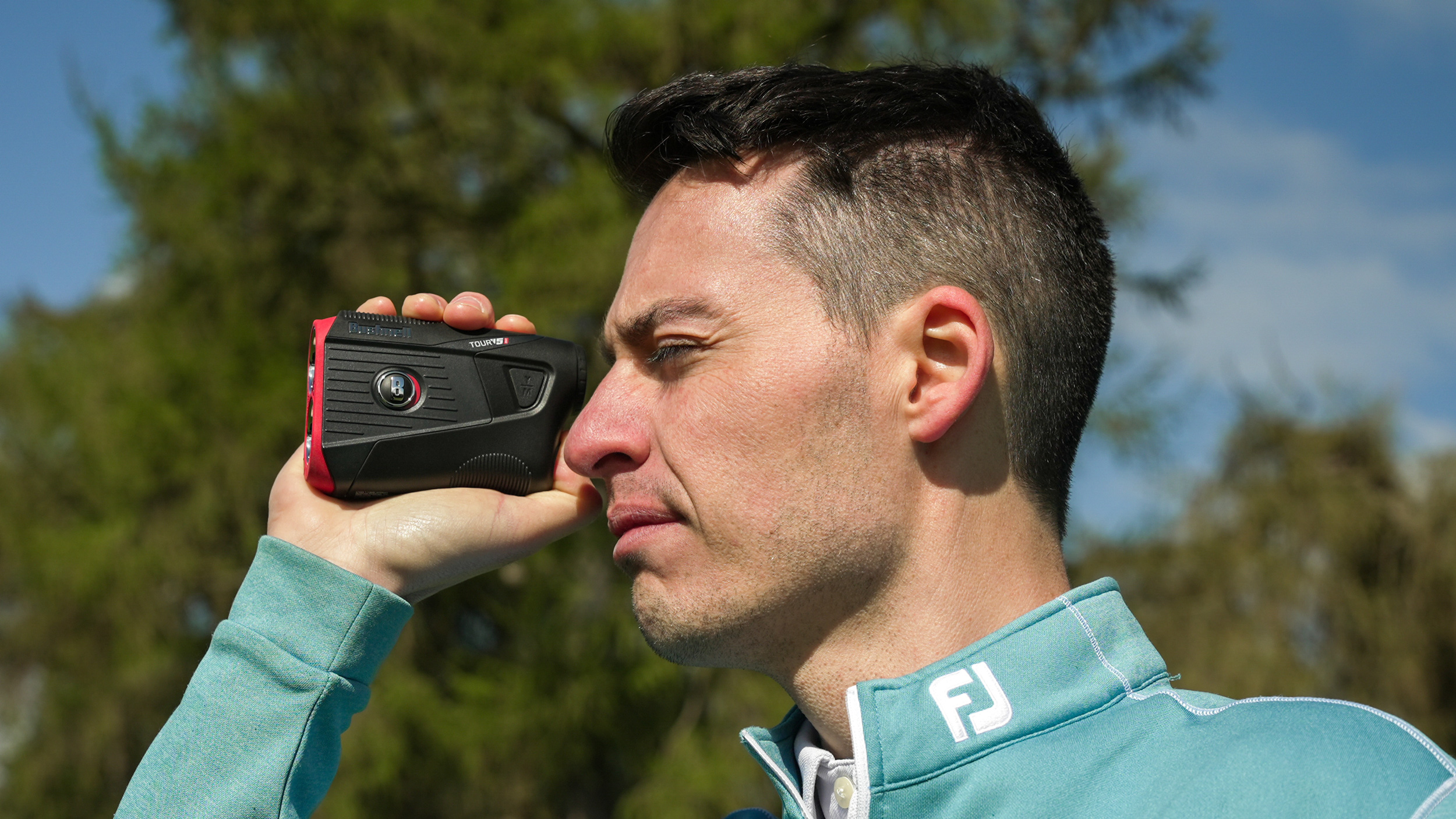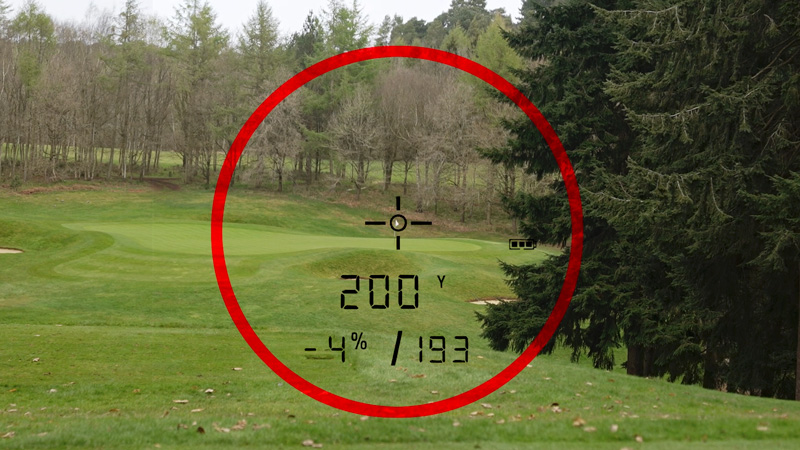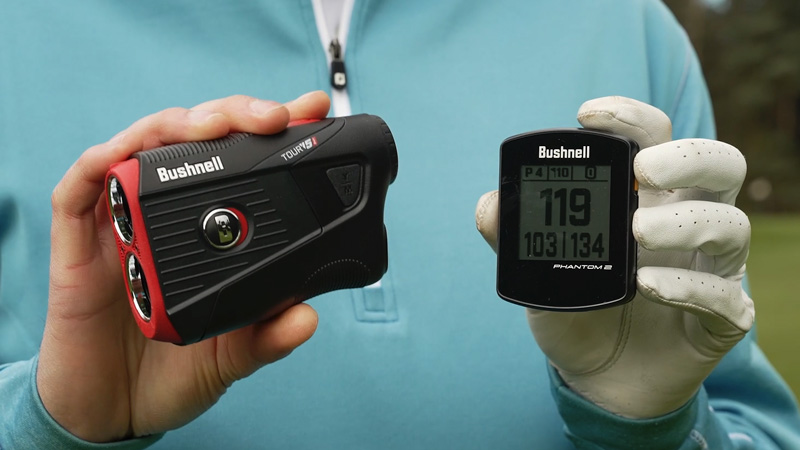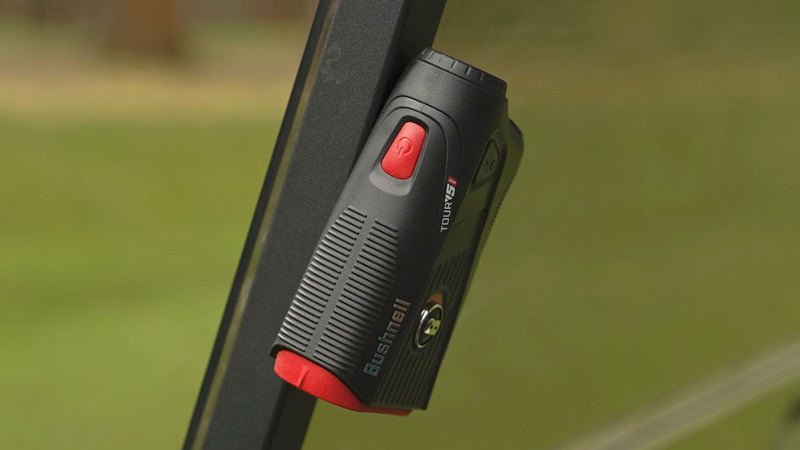8 Ways To Use Your Laser Rangefinder
Unsure if you need a laser rangefinder? We explain eight simple ways you can unlock lower scores by using one


Laser rangefinders have a reputation for being preferred by the better player and caddies out on tour but in actual fact, every level of golfer can benefit from having one on their person during a round of golf. Bushnell, the number one laser brand out on tour, is a household name among the best golf laser rangefinders and it supplied us with one of its latest models, the Tour V5 Shift Slim, to demonstrate eight different ways golfers of all standards can get the most out of this clever little device on the course at Woburn Golf Club.
We outline the 8 ways golfers can get the most out of their laser rangefinder
1. Getting The Correct Distance
The most obvious situation where a laser rangefinder really comes in handy is on approach shots into greens, given you a precise distance to the flag which allows you to be more specific with your club selection - assuming you know how far you hit each club in your bag. But you do need to be careful that the yardage you’re getting is the correct one, especially if there’s a busy background close behind the flag or it’s tucked just behind a bunker. Many rangefinders have features that provide an extra dose of reassurance that the distance you’re seeing in the display is the correct one, for example on the Bushnell Tour V5 Shift Slim it has Pinseeker with visual Jolt, so when the flag has been located the device gives out a vibrating pulse that you can feel in your hand and a flashing red ring appears around the scope in the display. Knowing the actual distance means you can swing with confidence, which should lead to better results, more consistently.
2. Tackling Tee Shots
Laser rangefinders aren’t just useful at picking out flags on approach shots. They’re also an especially useful tool off the tee. Through the display you’re able to pick out various points of interest that effect the line you take off the tee, the club that you hit and maybe even the shape of shot you try and execute. For example, you’re able to scope out the distance to trees at the end of a dogleg, the lip of a bunker you want to carry. Some laser rangefinders even have a scan mode that makes this process easier, so be sure to call upon your rangefinder when you reach the tee of a par 4 or 5 because it will give you the information you need to adapt the optimum strategy. Then it’s just down to you to execute it as best you can.
3. Compensating For Slope
Hitting shots to a green or fairway that is significantly uphill or downhill has a huge effect on the yardage. Shots going uphill play longer while shots downhill play shorter but it can be almost impossible to know by how much just by looking at what lies ahead. This is where a modern day laser rangefinder can really come to the rescue. By employing the Slope mode, the rangefinder will factor in the change in elevation and provide you with a yardage that compensates for it, so you don’t need to do the maths, you can just pull the club that hits the ball that distance.

It’s really easy to do, especially on the Tour V5 Shift Slim via a toggle on the side of the device. A word of warning - Slope functionality is not legal for competition play under the Rules of Golf so you can only use it during practice or social rounds so remember to switch it off when you need to but the information you glean from a practice round can of course be used during a competitive round on the same course so our advice to you would be to use it when you can, make a mental note of how the slope effects the distance and then put that into practice the next time you tee it up competitively.
4. Learning Your Club Distances
One of the key stepping stones to shooting lower scores is to know exactly how far you hit each club. So a good process to go through on the range with your laser is to zap the various flags or targets, make a note of how far each one is away and then hit shots to them all, noting how the balls travel with each club. Alternatively, on a members practice ground you could hit 10 shots, walk up to your balls and then laser from the average position of where they finished back to your bag. Doing it alongside a launch monitor, which normalises for range balls and the conditions, is a wise choice but there’s no substitute for seeing with your own eyes how far your shots are going and using a rangefinder to determine the actual carry distance.
5. Knowing When To Attack
Laser rangefinders are great but then can encourage you to go hunting for the flag in situations where perhaps a safer play would be the better course of action. That’s why it’s a good idea to combine the laser’s pinpoint functionality with a GPS, that shows simple distances to the front, middle and back of the green.

If there’s a tight carry over water or a flag tucked in tight to a green side bunker, for example, hitting to the middle of the green is a more sensible play. A less expensive clip on device, like this Bushnell Phantom 2, will provide you with quick and accurate at-a-glance distances where playing away from the flag is the right way to tackle the task at hand.
6. Dialling In Your Wedges
A rangefinder might naturally lend itself more to long game shots but it can also be a useful aid when pitching and chipping into greens. Often, golfers hitting shots from 75 yards and in are guessing how far the flag is away based on what they see but it would be wiser to adopt a more numerical approach whereby you can more easily adjust the length of swing with your favourite wedge to suit the distance at hand. So when practicing your pitching and chipping, use your rangefinder to measure different targets and then work on correlating the length of swing, be it swinging the hands back to knee height, waist height, chest height and shoulder height, with the resulting distance. It’s a sure fire way to sharpen up your short game.
7. Learn Your Driver Distance
When you've absolutely buttoned a drive down the middle of the fairway, most of us want to know how far we've actually sent the ball in a real-world environment and a laser rangefinder can help you do this. Providing you're not holding up play, when you reach your ball turn round and scope something up by the tee close to where you've just hit from - perhaps a bush or even someone in the group behind waiting to tee off. This will give you a pretty good idea as to how far your Sunday best drives go, which can inform your strategy and provide a benchmark for improvement should you be working on generating more speed and distance.
8. There When You Need It
The last way a rangefinder can come in handy is by being more readily available to you. There’s nothing worse than scrabbling around in your buggy trying to find it when it’s your turn to play and holding up the group behind. This is where a magnetic feature comes in, like the Bite feature on the Bushnell Tour V5 Shift Slim.

It attaches easily to the buggy frame or other metallic objects and has seven pounds of pulling force, so there’s no chance of it detaching when travelling over a bumpy path or piece of ground. What’s great about utilising this feature is that your rangefinder is always there when you need it and as we’ve explained in this video, that’s pretty much every shot from the tee up to the green.
Get the Golf Monthly Newsletter
Subscribe to the Golf Monthly newsletter to stay up to date with all the latest tour news, equipment news, reviews, head-to-heads and buyer’s guides from our team of experienced experts.

Joel has worked in the golf industry for over 15 years covering both instruction and more recently equipment. He now oversees all equipment and video content at Golf Monthly, managing a team of talented and passionate writers and presenters in delivering the most thorough and accurate reviews, buying advice, comparisons and deals to help the reader or viewer find exactly what they are looking for.
One of his career highlights came when covering the 2012 Masters he got to play the sacred Augusta National course on the Monday after the tournament concluded, shooting a respectable 86 with just one par and four birdies. To date, his best ever round of golf is a 5-under 67 back in 2011. He currently plays his golf at Burghley Park Golf Club in Stamford, Lincs, with a handicap index of 3.1.
Joel's current What's In The Bag?
Driver: Titleist GT3, 9°, Fujikura Ventus Black 6 S shaft.
Fairway wood: Titleist TSR3, 15°
Hybrid: Titleist TSi2, 18°
Irons: Titleist T150, 4-PW
Wedges: Titleist Vokey SM10, 50°, 54° and 58°
Putter: LAB Golf DF3
Ball: 2025 Titleist Pro V1x
-
 Volvo China Open 2025 Picks, Odds And Predictions
Volvo China Open 2025 Picks, Odds And PredictionsFollowing a break for The Masters, the DP World Tour returns for the final two weeks of its Asian Swing and the Volvo China Open is the penultimate event
By Jonny Leighfield
-
 Rory McIlroy's Sports Psychologist Explains Why He 'Didn't Talk' To Bryson DeChambeau In Masters Final Round
Rory McIlroy's Sports Psychologist Explains Why He 'Didn't Talk' To Bryson DeChambeau In Masters Final RoundDeChambeau raised eyebrows at Augusta National when claiming that McIlroy wouldn't engage in conversation during the final round of The Masters
By Jonny Leighfield